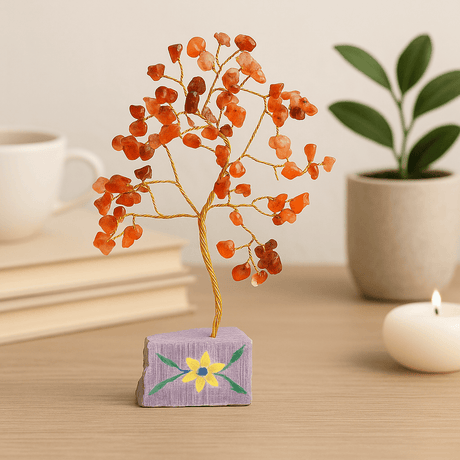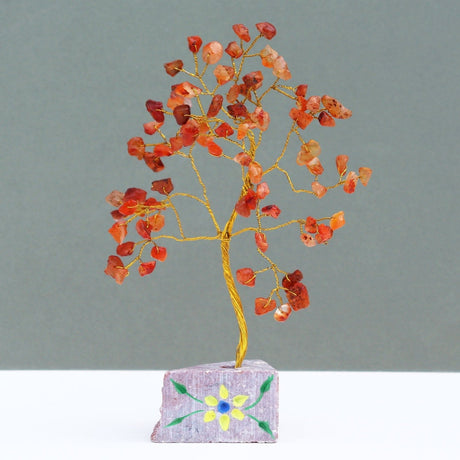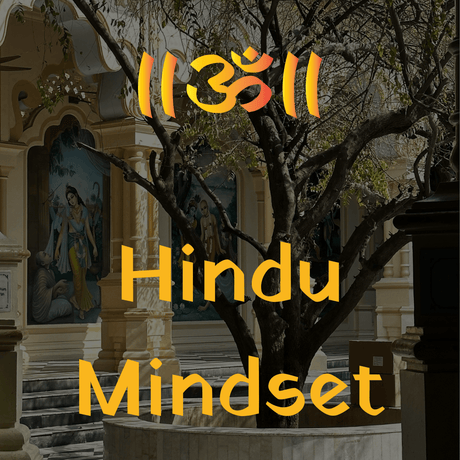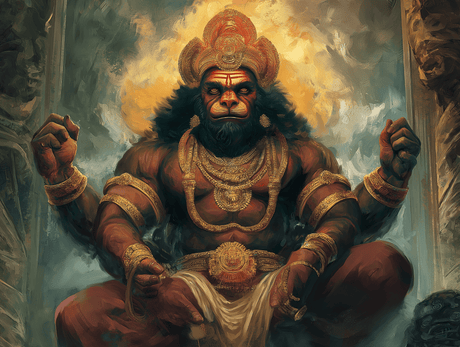The Tree of Life, an emblem woven into the fabric of various mythological, religious, and philosophical traditions, serves as a profound archetype representing the intricate web of life. Its roots, believed to have sprouted in Central Asia, have branched out across cultures, from Scandinavian mythology to Altai shamanism, illustrating the tree's universal appeal and symbolic potency.
Introduction to the Tree of Life 🌳
The Tree of Life is an ancient symbol that transcends cultural boundaries, representing the intricate web of life that connects all forms of creation. It is closely linked to the concept of the sacred tree and has been a central motif in religious, mythological, and philosophical traditions worldwide. This cosmic tree or world tree embodies not just the unity of all life forms but also the cyclical nature of life, death, and rebirth. Its widespread representation across different cultures highlights the Tree of Life's significance as a symbol of the interconnectedness of the earth, the spiritual realm, and the cosmos.
Origins and Historical Significance 🌀
The Tree of Life's origins can be traced back to ancient Mesopotamia, a cradle of early civilization where the motif of a sacred tree first emerged. This symbol of divine order and life's interconnectedness found resonance in the mythologies of neighboring regions, including Egypt and Greece. Ancient Assyrian depictions of the sacred tree highlight its role as a symbol of divine order, personified by the king's authority.
As this potent symbol meandered through the corridors of time and space, it adopted various forms and meanings. In Chinese Daoist mythology, the pantao, a peach that ripens once every 3,000 years, became the immortals' sustenance.
Norse mythology celebrated the apples of immortality, nurtured by the goddess Idun on sacred trees. This motif of a life-giving tree found its echo in the biblical Garden of Eden, where the Tree of Life stood as a beacon of immortality, subsequently becoming central to Jewish and Christian spiritual traditions.
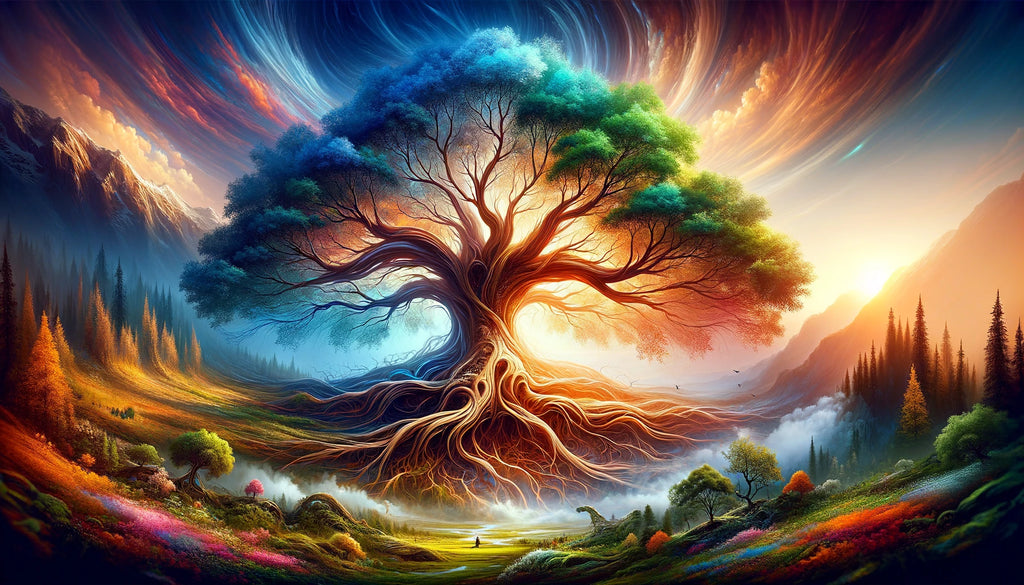
Variations of the Tree of Life Across Cultures and Traditions 🌳
The Tree of Life is a universal symbol that manifests in various forms across different cultures and spiritual traditions. Each variation carries its own unique interpretation and significance, deeply rooted in the beliefs and teachings of the culture it belongs to. Below are some of the notable variations of the Tree of Life:
- Kabbalah Tree of Life. A symbolic diagram in Jewish mysticism representing the ten Sefirot or attributes through which the Ein Sof (Infinite) reveals itself and continuously creates both the physical realm and the metaphysical realm. It serves as a pathway to understanding the nature of God and the structure of the universe.
- The Tree of Life in the Garden of Eden. Described in the Book of Genesis, this Tree of Life offers eternal life, symbolizing God's provision for immortality. The tree is a central part of the story of Adam and Eve, representing the unattainable wisdom and immortality that mankind seeks.
- Tree of Life in Sacred Geometry. This version emphasizes the geometric aspects of the Tree of Life, illustrating the interconnectedness of all life forms through mathematical patterns and structures. It is often used in various spiritual and religious contexts to depict the harmonious principles of the cosmos.
- Tree of Life and Energy Chakras. In some New Age and spiritual beliefs, the Tree of Life is aligned with the concept of energy chakras, representing the energy centers in the human body. It symbolizes the journey of spiritual growth and the alignment of physical and spiritual energies.
- Tree of Life in Buddhism. The Bodhi Tree under which Siddhartha Gautama, the Buddha, attained enlightenment. In Buddhism, this tree symbolizes wisdom, enlightenment, and the fulfillment of spiritual potential.
- Tree of Life in Hinduism. Often associated with the Asvattha (Banyan) tree, the Tree of Life in Hinduism represents eternal life, with its expansive canopy and deep roots symbolizing the vastness of the universe and the deep spiritual connections within.
- Tree of Life in the Qur'an. In Islam, the Tree of Life appears in the Qur'an as a symbol of temptation and the complexities of human desires. It represents the eternal debate between good and evil, guiding Muslims towards righteousness.
- Tree of Life in Ancient Egypt. Known as the Ished tree, the Tree of Life in Ancient Egyptian mythology is where the gods determined the fate of souls. It represents eternal life, regeneration, and the sun's cyclical journey, embodying the concept of death and rebirth.

Meanings of the Tree of Life 🌀
The Tree of Life, a symbol rich in meaning and deeply rooted in cultures around the world, encompasses a wide array of interpretations and significances. Among its many meanings, the Tree of Life represents:
- Interconnectedness. Symbolizing the interconnected nature of the universe, the Tree of Life illustrates how all forms of life are linked together, from the heavens above to the earth below.
- Growth and Strength. Just as a tree grows from a tiny seed into a sturdy structure, the Tree of Life symbolizes personal growth, strength, and the journey of life.
- Rebirth. With its cycle of shedding leaves and growing new ones, the Tree of Life signifies rebirth and renewal, echoing the cycle of life, death, and regeneration.
- Individuality. Each tree is unique, symbolizing the individual's journey, traits, and the importance of staying true to oneself.
- Immortality and Eternal Life. In many cultures, the Tree of Life is seen as a source of immortality and eternal life, often providing sustenance or protection that leads to eternal existence.
- Wisdom and Knowledge. The Tree of Life is frequently associated with wisdom and knowledge, with its branches reaching into the sky and roots delving into hidden truths.
- Harmony and Balance. Reflecting a balanced structure of branches and roots, the Tree of Life symbolizes harmony within the universe and the balance of nature.
- Family and Ancestry. Often used to depict family connections, the Tree of Life represents the roots of ancestry and the branches of future generations, illustrating the continuity of family lineage.

Conclusion: Embracing the Universal Resonance of the Tree of Life 🌳
In the myriad of symbols that permeate human history, the Tree of Life stands as a profound beacon of interconnectedness and wisdom. It is a symbol that not only adorns the pages of mythological texts but also finds its way into our homes and hearts through various items that carry its essence.
🌀 At SHAMTAM store, we celebrate this symbol with a curated collection of Tree of Life-themed artifacts, from intricate jewelry to captivating home decor. Each piece is crafted to bring the timeless spirit and the nurturing energy of the Tree of Life into your daily life. Discover the perfect emblem of unity and growth at SHAMTAM store and let the Tree of Life enrich your journey with its ancient strength and beauty.







